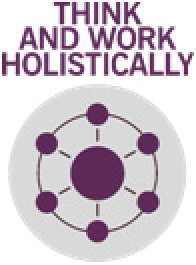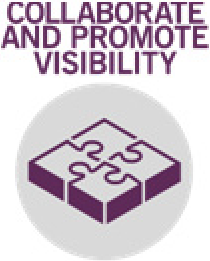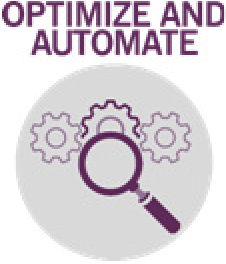ITIL 4 Managing Professional Certification Course: High Velocity IT (HVIT) - HVIT Approaches
| Characteristic | Benefits |
| Lean | Helps to improve throughput and reduce waste. HVIT environments benefit from approaches with Lean characteristics due to the pressure on time to market and time to customer |
| Agile | Adds close and iterative collaboration with users. Approaches with Agile characteristics are important for HVIT environments because digital products and services have to be developed in response to changeable market demands |
| Resilient | Maintains workable availability and performance. The systems that support HVIT environments are complex and therefore error‐prone. Approaches with resilient characteristics minimize the effect of incidents by degrading systems gradually and restoring service quickly |
| Continuous | Ensures fast and reliable deployment. Approaches with continuous characteristics extend the Lean focus on throughput by standardizing and automating processes for integrating, building, testing and shipping code, enabling digital products and services to be available when required |
1. Lean Break large pieces of work down into smaller items:
Reducing work‐in‐progress (WIP) improves throughput:
Theory of Constraints helps to improve throughput: identify the weakest link, reduce load on it, organize around it |
 |
2. Agile Working software is delivered in frequent increments Information (feedback) is gathered quickly Decisions are delayed as long as possible Software is developed by small, self‐organizing, trusted teams Management facilitates, not controls, multi‐skilled staff Definition of done: users have achieved the desired outcome from their investment in software |
 |
3. Resilient Example techniques:
|
 |
4. Continuous Small, frequent, batches of work can deliver value earlier and are safer Example techniques:
All these techniques need great collaboration and automation |


|
5. Service-dominant logic Key message: service-dominant logic is a mental model of economic exchange in which stakeholders cocreate value by applying their competences and other resources Service-dominant logic:
Goods-dominant logic: service provider delivers value to the customer by transferring ownership of goods Service provider involves consumers in the delivery process Service interactions are consumer-focused Consumer gets value when they integrate and apply provider resources Each consumer determines value based on their specific needs and experience at the time |


|
Go back to ITIL 4 Managing Professional Certification Course: High Velocity IT (HVIT) to finish this chapter or to the main page ITIL 4 Managing Professional Certification Course.
Interesting Management
-

Part 1: A good manager, better team motivation, better team productivity, better team results
When you are managing a team, “how to be a good manager” is the “must”...
-

Report optimization, increase your time management
As manager, I am doing many reports, even when I was an ITIL consultant, I still needed to do many reports...
-

Tools to get your ITIL intermediate certifications, the missing 15 points for the ITIL 4 Managing Professional
ITIL V3 is going to be obsolete...
-

The importance of the first customer meeting for the service
Managing an IT service when I start a new company is not an easy task, particularly true, if the service...



